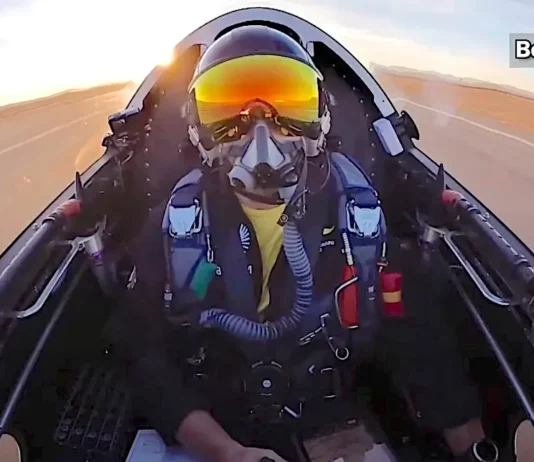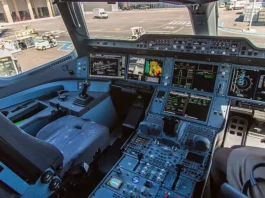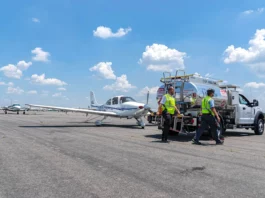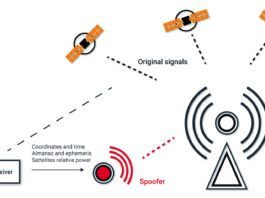The Medical Reform Bill, ADS-B Rebates and Hybrid-Electric Planes
After a long struggle and many failed attempts by general-aviation advocacy groups, new federal legislation was passed this summer that mandates changes in the way private pilots are medically certified. The B-29 Doc took to the air in July for the first time in 60 years, following thousands of hours of restoration work by scores of dedicated volunteers. With a deadline of 2020 looming for the owners of more than 100,000 general-aviation aircraft to install ADS-B capabilities, the industry and regulators are creating incentives to encourage owners to upgrade sooner rather than later. On July 4, Siemens completed the first public flight of its hybrid-electric motor installed in an Extra 330LE aerobatic airplane, from an airfield near Dinslaken, Germany.
Aviation News August 2016
After several years of work, the FAA has released new Airman Certification Standards for the private pilot and instrument ratings. Piper Aircraft in June announced that its $2.9 million M600 six-seat single-engine turboprop is now FAA certified, and features an all-new wing, Garmin G3000 touchscreen avionics, and a new interior. At the European Business Aviation Convention and Exhibition, held in May in Geneva, Textron announced new details about its clean-sheet single-engine turboprop design, and said its now accepting letters of intent from buyers. Icon Aircraft CEO Kirk Hawkins said in May that deliveries of the long-awaited A5 light sport aircraft wont begin until at least next year, citing delays and difficulties in setting up the production line and supply chain. The FAA says it will offer $500 rebates to aircraft owners who install ADS-B Out systems, but the program, which starts this fall, is limited to one year and 20,000 owners.
General Aviation News: July 2016
The Airbus Perlan Mission II team, which aims to fly a pressurized glider to a record altitude of 90,000 feet, has been continuing its flight-test program in Minden, Nevada, and plans to relocate to Argentina this summer. General aviation aircraft shipments declined 3.7 percent in the first quarter of this year, compared to the same period last year, according to the General Aviation Manufacturers Association. The U.S. Helicopter Safety Team, an industry-government partnership that launched in 2013, has set a goal of a 20-percent reduction of fatal civil helicopter accidents by 2019. The general-aviation industry has been lobbying for years for an overhaul of Part 23, to make it easier and faster to certify new airplanes and technology upgrades. Aero Electric Aircraft Corp. rolled out its solar-electric Sun Flyer airplane, a two-seat low-wing trainer, at Colorados Centennial Airport, in May.
GA Certification Rules, the 2015 German Crash, Women Aviators, and More
After nearly 10 years of lobbying by general aviation advocacy groups, the FAA in March released a draft proposal aiming to overhaul light aircraft certification. Aviation authorities in Europe released their final report in March on last years fatal Germanwings flight, concluding that airline officials couldnt have done anything to prevent the crash, since nobody told anyone at the airline that first officer Andreas Lubitz was suffering from mental-health problems. Women in Aviation International held their annual conference in March, in Nash-ville, Tennessee, with more than 5000 people attending. Responding to a shortage of pilot applicants for entry-level airline jobs, JetBlue has launched an ab-initio flight training program, the first of its kind in the U.S.
April 2016
Entrepreneur Elon Musk, CEO of Tesla and SpaceX, said in February he was close to starting work on a vertical-takeoff-and-landing electric jet as a practical alternative to conventional aircraft. In January, the U.S. Sport Aviation Expo hosted its 12th annual event in Sebring, Florida, and ran into some weather problems. Mooney unveiled the M20V Acclaim Ultra, a significant redesign of the companys best-selling Acclaim, at its Texas headquarters in February. General aviation sales declined 4.6 percent worldwide in 2015 compared to the year before, the General Aviation Manufacturers Association reported in February. The Singapore Airshow, held in February, featured the debut of the 400S Seaplane, by Viking, a Canadian company that has been building Twin Otters for several years.
Accidents, Drones, NASA Aircraft and More
The NTSB says general aviations loss-of-control accident rate is too high, and held a day-long Humans and Hardware forum on the issue in October, in Washington, D.C. As the FAA worked last year to develop new rules governing the use of small drones in the National Airspace System, a Google executive said the company plans to launch commercial drone home deliveries in 2017. NBAA called its 2015 convention, held in November in Las Vegas, enormously successful on a business and community level. A group of NASA engineers and private-sector partners working in California is creating an X-Plane demonstrator, based on a Tecnam 2006T, that they hope will prove the efficiency of using an array of small electric-powered propellers for general aviation aircraft. The nonprofit group working to get the B-29 Doc back in the air exceeded their Kickstarter goal, raising $159,151 from 1,007 backers, and said they now have the funds they need to complete the flight-test program. And Jet Pack Aviation, of Australia, introduced its lightweight jetpack with a flyby of the Statue of Liberty.
IFR Airport Basics
Recently, a reader asked about a puzzling approach at Chatham, MA (KCQX). The RNAV (GPS)-B is perfectly aligned with Runway 24 and the descent angle is a routine 3.05 degrees, yet it has only circling minimums. Approaches most often just have circling minimums if the alignment to the runway exceeds 30 degrees (for most procedure types) or the descent angle is greater than 3.77 degrees (for Category C and below). So, whats up at Chatham?
Briefing: December 2015
What's new in the world of avionics? Attitude indicators are now FAA approved. If you own a drone, get ready to have it registered. Virtual Air Traffic Control is coming to the States. Cargo overloading leads to crash killing nine people in Alaska. The NTSB holds a panel on loss of control, and more.
Briefing: November 2015
An autonomous landing system that Diamond Aircraft officials call an electronic parachute has been successfully tested in Austria, the company announced in September. Tested in a DA42 twin, the system uses fly-by-wire technology and has been in development for about three years. The aircraft, with two test pilots on board, flew the approach and landing to an uncontrolled field without any input from pilots in the cockpit or on the ground. The airplane touched down gently right on the centerline. CEO Christian Dries said the technology may be available as an option within a few years. An auto-takeoff feature also is in the works.
Briefing: October 2015
The FAA raised concerns this summer over the escalation of pilot reports of drone encounters, with 650 reports in the first half of the year, nearly three times as many as in all of 2014. Encounters occurred at altitudes up to 10,000 feet and were reported by aircraft from helicopters to airliners. Conflicts with firefighters also were on the rise. In August, the Transportation Departments Office of Inspector General said it would launch an audit to scrutinize the FAAs procedures for allowing drone operations in the national airspace.
Briefing: September 2015
EAA hosted one of its busiest Oshkosh shows ever in July, with record numbers for aircraft arrivals and campers. Near-perfect weather for the entire week kept the airplanes flying. The show hosted for the first time a B-52, and an Airbus A350 XWB from the test fleet was open for tours. All the usual daily airshows, forums, and events kept visitors busy nonstop. Aircraft designer Burt Rutan returned after an absence of several years to talk about his new SkiGull amphibian design, and Icon delivered their first A5 amphib LSA to EAAs Young Eagles. Yingling Aviation, based in Wichita, debuted a new remanufactured 172, and Vulcanair, from Italy, introduced a newly FAA-certified twin turboprop.
Briefing: August 2015
Its been a long road, but Icon announced in June that its A5 light sport amphibian met all FAA requirements and the company was ready to start serial production. The first customer delivery was scheduled to take place at EAA AirVenture at Oshkosh, with about 60 more deliveries expected within the next 12 months. The all-composite A5 offers a spin-resistant design, a cockpit inspired by luxury automobile styling, and folding wings to make it easy to transport by trailer or store in a garage. Its powered by a Rotax 912iS and sells for up to $250,000. The company first introduced its design in 2006.







